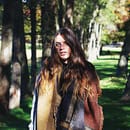This past April 13, artist Bettina Forget took part in a talk at Concordia’s downtown campus on the Convergence Initiative–a project that has art and science collaborate. The plan for the seminar was to walk the audience through artwork that takes aspects of science as its lead. Last spring, I sat with Forget to talk about her artwork in the field of science.
Her passion for astronomy began when Forget studied in Singapore at Nanyang Academy of Fine Arts. She would do astronomy at night and work on art in the day before she realized she could mesh the two. At the time, her professors did not know how to advise her, saying, “nobody does this, we don’t know who you should look at in art history.”
When she initially opened Visual Voice Gallery in downtown Montreal about 10 years ago, Forget’s goal was to simply be able to pay for the studio space while being able to make art. She started to rent out part of the space to emerging artists. It expanded, and she started to realize that she was good a curating and built on that. It was only until four years ago that Forget decided to select art that fell into her realm of interest: science. Before that, it was a melting pot of “what Bettina likes, which isn’t a really clear,” Forget says.
Dabbling in astronomy and continuing her artwork lead Forget to the Convergence Initiative. “There is a lot of overlap between how we perceive things and see things and think about things in our brains, and how artists perceive things,” Forget explains.
Being a woman in a male dominated field such as science can be alienating. Forget explains that it’s not that the environment is hostile, but that for some reason, women don’t tend to take the scientific route in their careers—and more specifically into amateur astronomy. She explains that she’s “breaking down the gender stereotypes that are associated with these disciplines and creates access points for women into science through the arts.”
In the various programs Forget takes part of, such as being a researcher for the SETI Institute (Search for Extraterrestrial Intelligence), scientists and artists work alongside to help each other out. As a researcher, she interviews both artists and scientists who collaborate together and finds out what kind of questions are being asked by both parties and what both professionals are getting out of the collaboration.
Every artist has different method of preparing for an artwork. Forget gives the example of Scott Kildall, one of their artists, “he is very interested in data sets, and scientists are full of data sets.”
For Forget, her main interest is the question that connects science to the human condition. As an artist, Forget has more leeway, and is free to ask more philosophical questions that scientists can’t. “I feel I get informed and inspired by the science, but I don’t illustrate the science. Good sci-art takes it a step further.”
Another question she’s tackled, was the role of women in science through her Women with Impact project. The moon’s craters are named after famous and notable figures, the criteria being that they were astronomers, mathematicians, or philosophers, and have been dead for at least three years. While reviewing the moon atlas, Forget noticed that not many craters were named after women. In fact, out of the 1605 craters on the moon, only 29 are named after women, “it’s 1.8 per cent, I did the math,” Forget adds.
With that information, Forget sketched each crater using Lunar Reconnaissance Orbiter’s website, which has images of the moon taken from a spacecraft, and wrote the names on the pages and framed them. The goal was to let the viewer ask their questions, “It becomes their inquiry rather than me preaching. I don’t want to be preaching, ever.” She also didn’t want to be overtly feminist, just use the feminist question to guide her work.
With her residency at Mont Mégantic Observatory, Forget is exhibiting artwork at the Université de Montréal along with Yann Pocreau. This started in September and will last until December.


